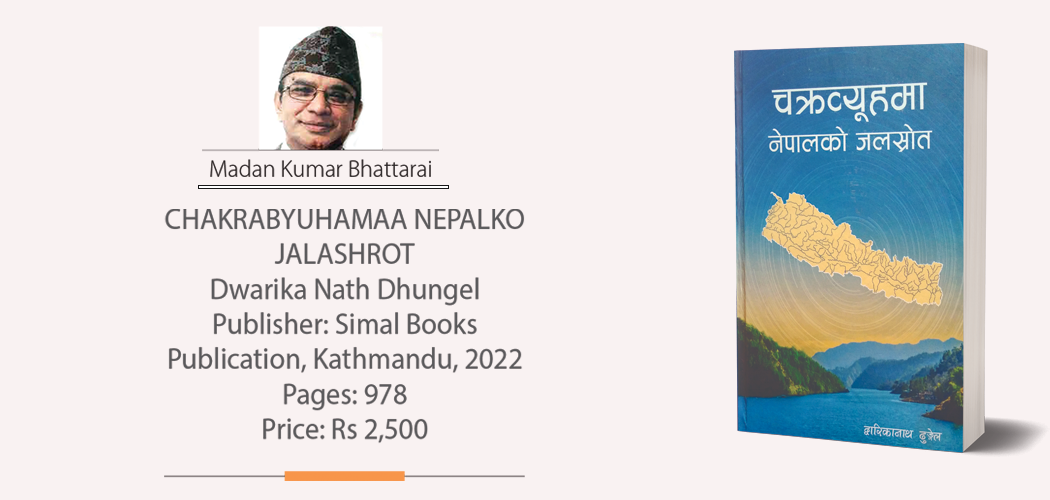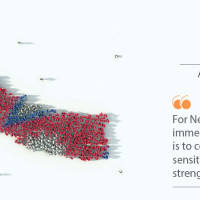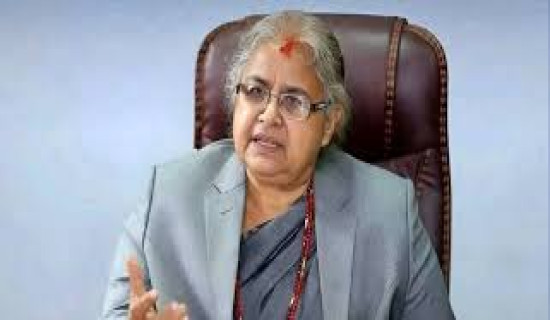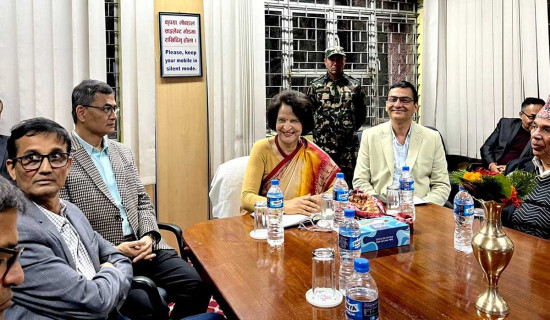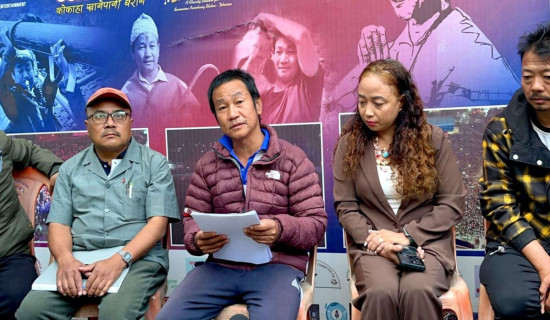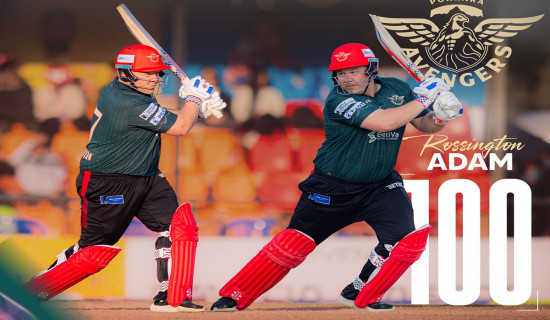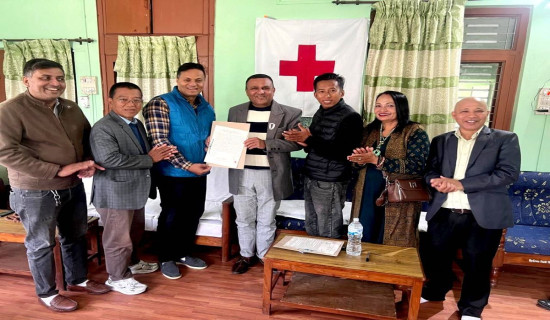- Wednesday, 3 December 2025
Manual On Nepal's Water Resources
Madan Kumar Bhattarai
Dr. Dwarika Nath Dhungel, a seasoned administrator and prolific writer, has recently launched a seminal work with considerable details of his perspectives on Nepal's vast water resources with relevant proof and evidence of the apparently mishandled area.
The author has at least three benefits, first, his full grip on the subject matter through study, experience and exposure, second, personal interest, and last but not least, his ability to present a cogent approach to readers.
There is absolutely no doubt that such a vital resource has badly been waiting for its optimum utilization for social and economic upliftment but has fallen prey to politics during all these years despite bold claims of parties of harnessing it for the overall interest of the country.
The monumental book entitled Chakrabyuhamaa Nepalko Jalashrot can roughly be translated as Nepal's Water Resources in the Vortex of Cross-fire. The book with such a revealing title has an attractive cover depicting Nepal's new map, smooth flow of language and copious details of almost every aspect of our most important resource.
Besides 50 pages of introduction and comments by author, publishers and dignitaries, the book is 978 pages long and is conveniently divided into 7 parts and 49 chapters that consume a total of 670 pages. Besides, the book has 58 pages of bibliography and references.
The beauty of the magnum opus is that appendices alone cover a huge portion of 207 pages, almost as much as a standard book on any area providing a ready reference for all agreements and engagements. In addition, the picture gallery is extensively inclusive.
The sheer volume and comprehensive treatment of the subject make the book indispensable for any reader wishing to understand the painful saga of undoings and misdoings in terms of our water resources. This is not simply our 'short-sighted' approach or partisan consideration.
There are takers of our viewpoint even in India. Top Indian diplomat, Jagat Singh Mehta, is of the view that the experience of the Koshi and Gandak projects with Nepal getting palpably unfair treatment, has cast shadows on nearly all subsequent bilateral negotiations in terms of riparian cooperation.
The marvellously illustrated book is largely an insider's personal and practitioner's perspective as the author served as Water Resources Secretary for two and half years. He also has practical experience serving in the Mahakali region as an administrator and has visited the area many times even in recent years.
Besides, the Mahakali region has remained one of the most complicated and unsettled issues of bilateral relations in terms of harnessing the resource despite more than a quarter of a century after the signing of the Mahakali Treaty and resolving vexed border dispute largely about conflicting claims on the actual source of Mahakali river.
The author laments the prevalent tendency to hold bigger projects like Karnali-Chisapani and West Seti to prevent their execution through what he finds collusion of vested interest at home and abroad. Dhungel also decries the systematic degeneration of established institutions like the Water and Energy Commission set up with lofty objectives of promoting judicious execution of Nepal's water resource projects.
Another anomaly is motivated splits and mergers of institutions relating to water resources virtually decimating defined goals and objectives. The book has also depicted double standards on the part of political actors in harnessing water resources as exemplified in the context of ratification of the Mahakali Integrated Treaty that even led to a split in the major opposition party.
The author gives anecdotes of his moments with politicians, civil servants and even diplomats in the context of Nepal's rather inconsistent approach towards national issues including water resources and border disputes.
Dhungel's is possibly the first work of its type that has given extensive coverage of Nepal's entire water resources. It reviews foreign aid strategies, especially in terms of the pros and cons of harnessing water resources.
This can be read in the context of the irony that while the country boasts of its rich natural endowments, a majority of the people are forced to stay in a state of poverty, malnourishment, deprivation and even denial of access to potable water.
It gives details of sore points between Nepal and India in terms of riparian cooperation including continued imbroglio over the preparation of a detailed project report that has proved elusive for more than 25 years after the signing of the landmark treaty on riparian cooperation as regards Mahakali. Besides India, there is, of course, a detailed description of other major donors like Germany and Japan and international institutions involved in Nepal's development including water resources.
On the debit side, some proof mistakes are possibly unavoidable in a project of such an extensive scale. In some cases, the names of people are misspelt. While Dhungel has given an elaborate account of the subject matter and negotiations, some descriptions that could have been inserted according to their relevance in various sections, are too brief to demand treatment as separate chapters.
Two matters seem to have been missed out on in the book. First, despite references to King Birendra here and there, his landmark proposal for regional cooperation in harnessing Nepal's water resources in 1977 could have become a major chapter.
Second, the impact of climate change on the Himalayas, enhanced snow-melting and risks of glacial lake outburst flows with their long-term effect on both environment and potential exploitation of our water resources could have been discussed at length.
Another glaring point is that many verbatim accounts and discussions are reproduced in extenso instead of their presentation in a summarised and concise form. This is also one reason that speaks of the length of the book.
To conclude, despite certain weaknesses as described above, the author deserves sincere congratulations on his most painstaking endeavours to present a truly comprehensive account of the status of Nepal's water resources, in itself a formidably challenging task. At the same time, I wish him all success in his efforts to bring out more books on various aspects of Nepal's statecraft from general administration to some specific areas as he has a vast reservoir of information and statistics.
(Formerly associated with The Rising Nepal, Dr. Bhattarai is a former Foreign Secretary and writer on foreign policy. )
How did you feel after reading this news?

